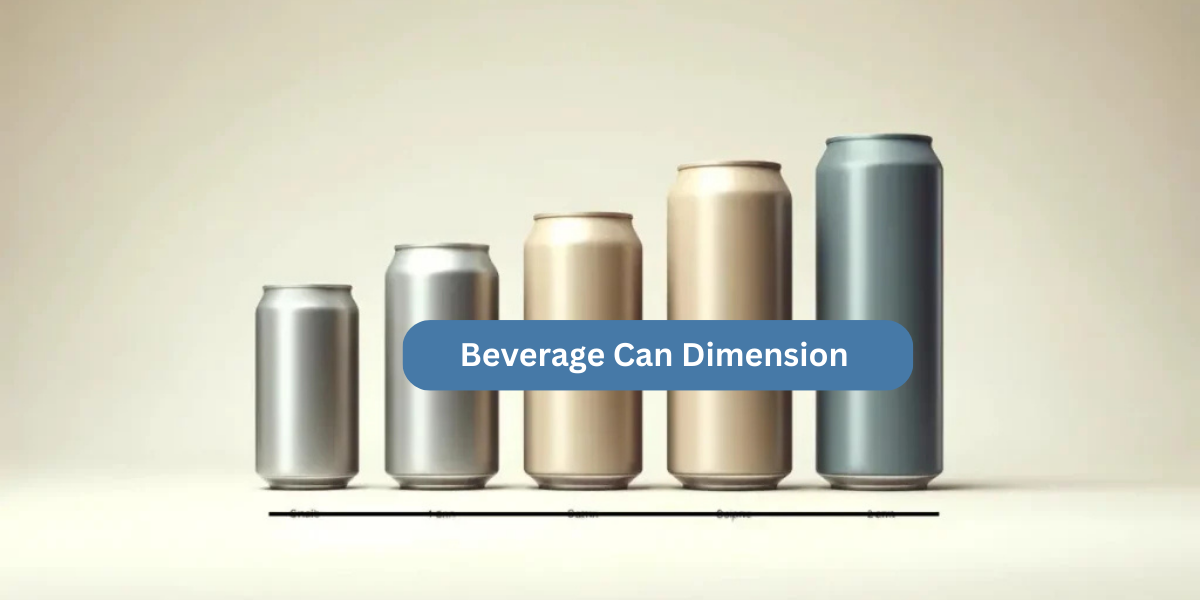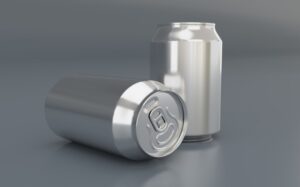Ever wondered why some soda cans feel slimmer or taller than others? Whether you’re a manufacturer, graphic designer, or just someone curious about packaging sizes, knowing the exact dimensions of beverage cans can make a big difference. This guide breaks it all down from standard sizes to unique can shapes so you’ll never be left guessing again.
In this article, we’ll cover:
- The most common beverage can sizes and dimensions
- How can sizes vary by country and brand
- The role of can shape in branding and storage
- Tips for choosing the right can size for your needs
Beverage Can Dimension are more popular than ever and the market is expected to hit $60.92 billion by 2026. With so many different can sizes out there, it’s important to know the basics. Whether you’re buying cans for your product or just curious about how they’re made, this easy guide will walk you through everything you need to know about beverage can sizes and dimensions.”
What Are the Standard Beverage Can Dimensions?
Let’s start with the most widely used size: the 12 oz (355 ml) can—a favorite in the U.S. for soft drinks and beers.
Standard 12 oz Can Dimensions:
- Height: ~4.83 inches (122.7 mm)
- Diameter: ~2.60 inches (66.2 mm)
- Volume: 12 fluid ounces (355 ml)
These cans are compact, stackable, and designed to fit perfectly into standard cup holders, vending machines, and refrigerators.
Common Beverage Can Sizes Around the World
While the 12 oz can is a U.S. standard, can sizes vary across the globe. Here’s a quick breakdown of popular options:
| Can Size | Volume (ml/oz) | Height | Diameter | Common Use |
|---|---|---|---|---|
| Slim Can | 250 ml / 8.4 oz | ~5.0 in | ~2.25 in | Energy drinks, sparkling water |
| Standard Can | 330 ml / 11.2 oz | ~4.8 in | ~2.6 in | Europe soft drinks |
| Tall Can | 500 ml / 16.9 oz | ~6.6 in | ~2.7 in | Craft beer, iced coffee |
| King Can | 568 ml / 19.2 oz | ~7.5 in | ~2.8 in | Beer (UK pint cans) |
| Mini Can | 150 ml / 5 oz | ~3.1 in | ~2.2 in | Juice, kids’ drinks |
Understanding Slim, Sleek, and Stubby Cans
Not all cans are created equal. Beyond volume, shape plays a key role in both marketing and function.
Slim Cans
- Tall and narrow
- Typically used for energy drinks or sparkling waters
- Sleek and modern appearance
Sleek Cans
- Similar in height to standard cans but thinner
- Popular in the health-conscious and beverage startup markets
Stubby Cans
- Shorter and wider
- Often used for craft beers or nostalgic branding
- Stand out on store shelves
Material and Weight: What’s Inside the Can (Besides Your Drink)
Beverage cans are usually made from aluminum, chosen for its light weight and recyclability. A standard 12 oz empty can weighs about 14 to 15 grams.
Other material details:
- Wall thickness: 0.097 mm (thin but strong)
- Can top (end): Slightly thicker and made separately
- Recyclability: 100% and endlessly recyclable
FAQs: Common Questions About Beverage Can Sizes
1. Can I use any size can in a vending machine?
- No vending machines are typically calibrated for standard 12 oz cans. Slim or tall cans may not fit unless the machine is adjustable.
2. What size is a Red Bull can?
- Red Bull uses a slim 8.4 oz (250 ml) can. It’s about 5 inches tall and 2.25 inches in diameter.
3. How many cans fit in a standard fridge drawer?
- On average, a fridge drawer can fit 10–12 standard 12 oz cans, depending on layout.
Tips for Choosing the Right Can Size
When selecting a beverage can for your product or storage needs, consider the following:
- Target market: Younger audiences often prefer slim cans; traditional consumers lean toward standard or stubby.
- Distribution method: Slim cans may be better for online delivery due to space savings.
- Shelf presence: Taller or uniquely shaped cans grab more attention in stores.
- Compatibility: Make sure your cans fit storage, vending, or cupholder requirements.
Real-World Examples and Use Cases
Craft Breweries
- Many craft breweries use 16 oz (473 ml) tallboy cans to stand out and offer more value. These cans also allow for bold label artwork.
Energy Drink Brands
- Brands like Monster and Red Bull use slim cans to project a sleek, energizing image—catering to athletes and young adults.
Soda Companies
- Coca-Cola, Pepsi, and others use mini 7.5 oz cans for calorie-conscious consumers who want a smaller portion size.
Recommended Visuals
To enhance user experience, consider adding:
- A comparison chart with actual images of different can sizes
- An infographic showing the internal structure of a beverage can
- A visual size guide with cans next to everyday items like phones or soda bottles
Alt text example: “Size comparison chart of standard, slim, and tall beverage cans.”
Conclusion: The Perfect Can Size for Every Sip
Whether you’re designing packaging, choosing cans for a vending machine, or just curious, knowing beverage can dimensions helps you make better choices. From slim cans to tallboys, every size serves a unique purpose and now you’ve got the full scoop.
Need help choosing the right can size? Bookmark this guide or share it with a friend who’s always asking about that “weirdly tall can.”


